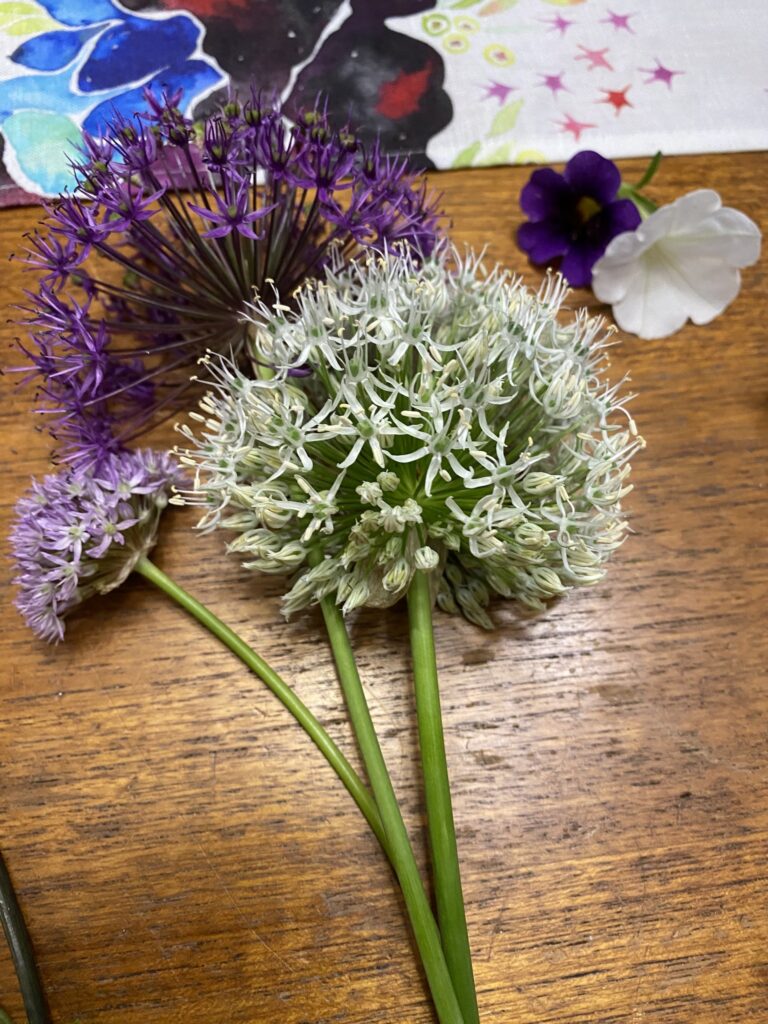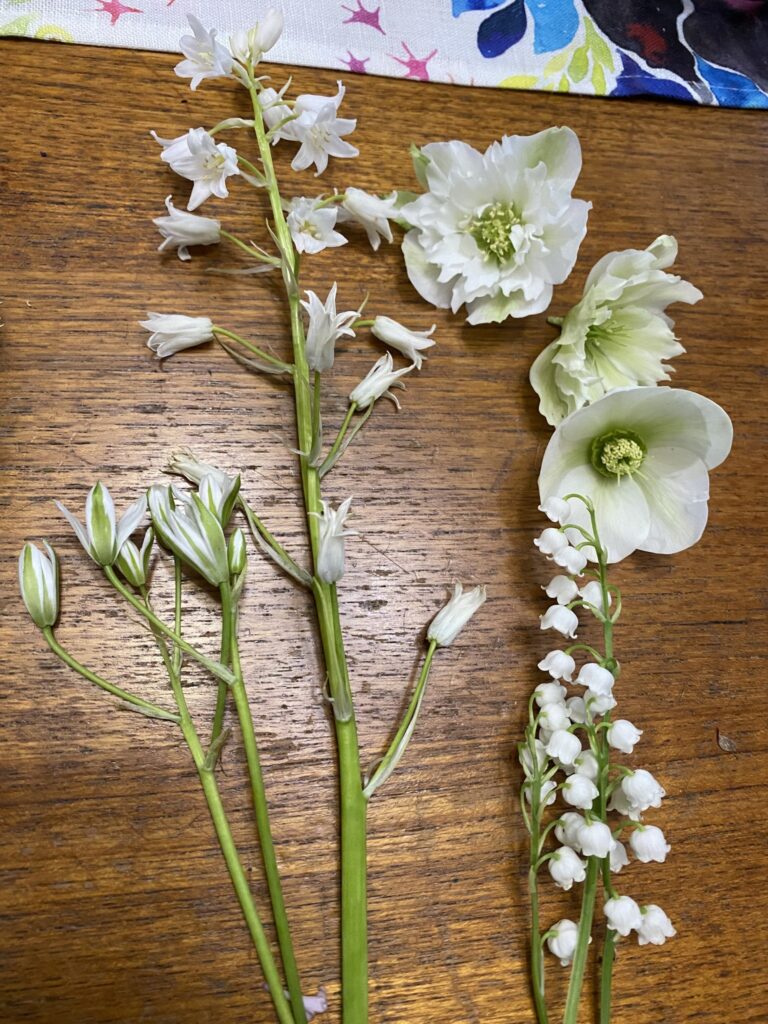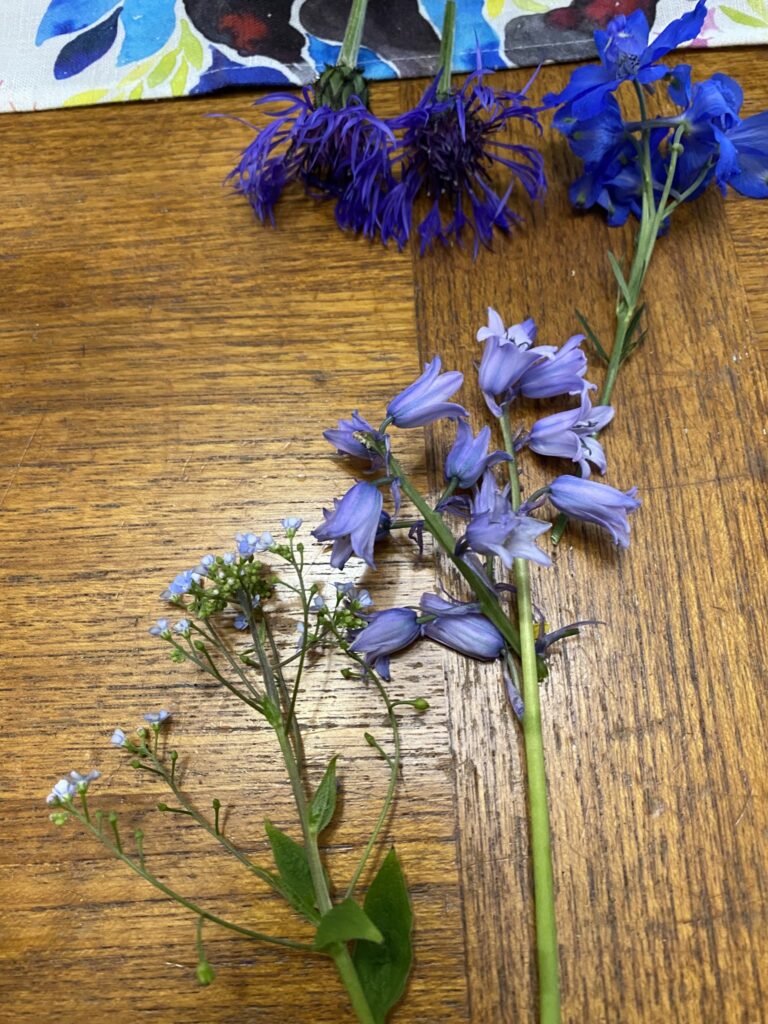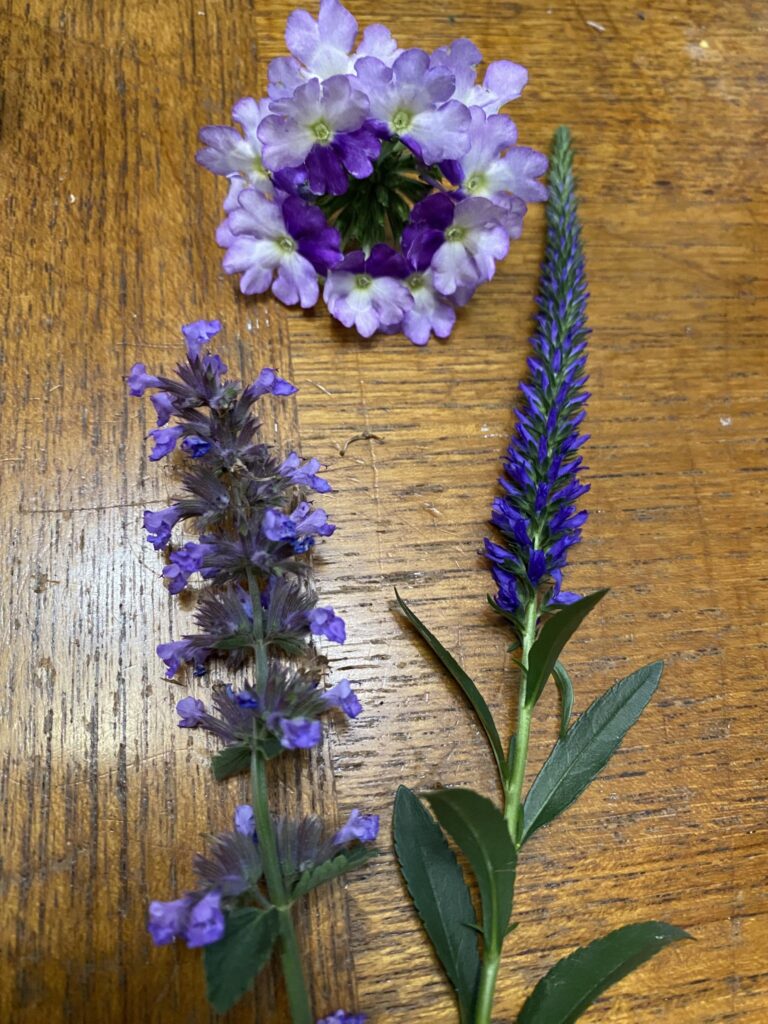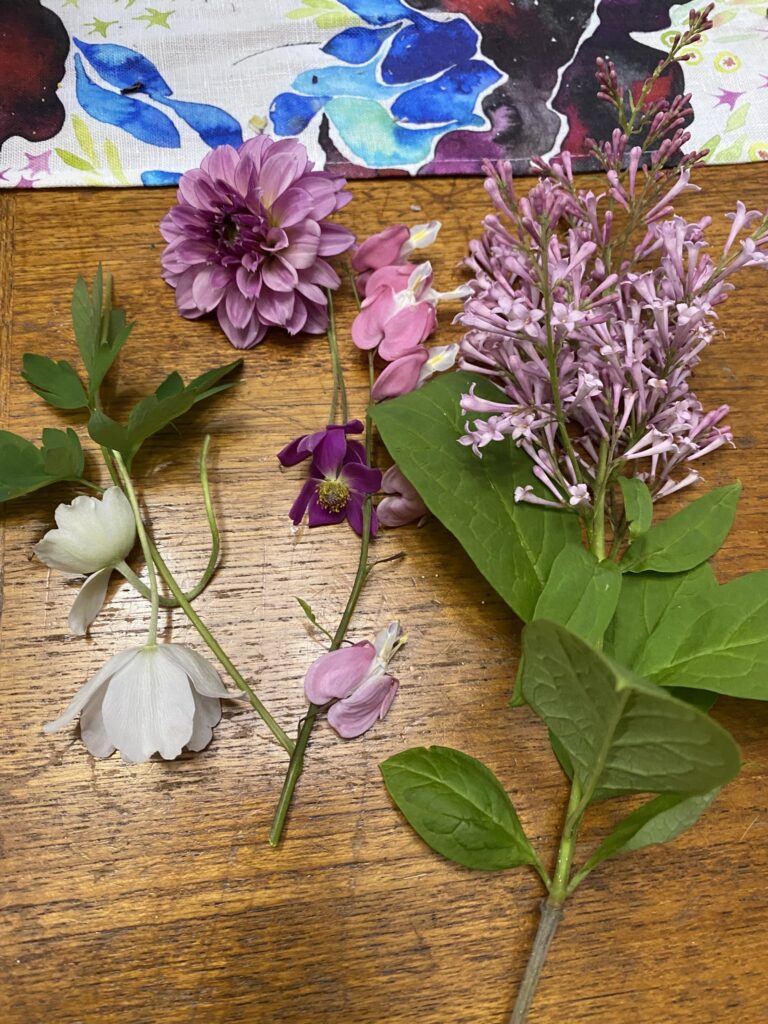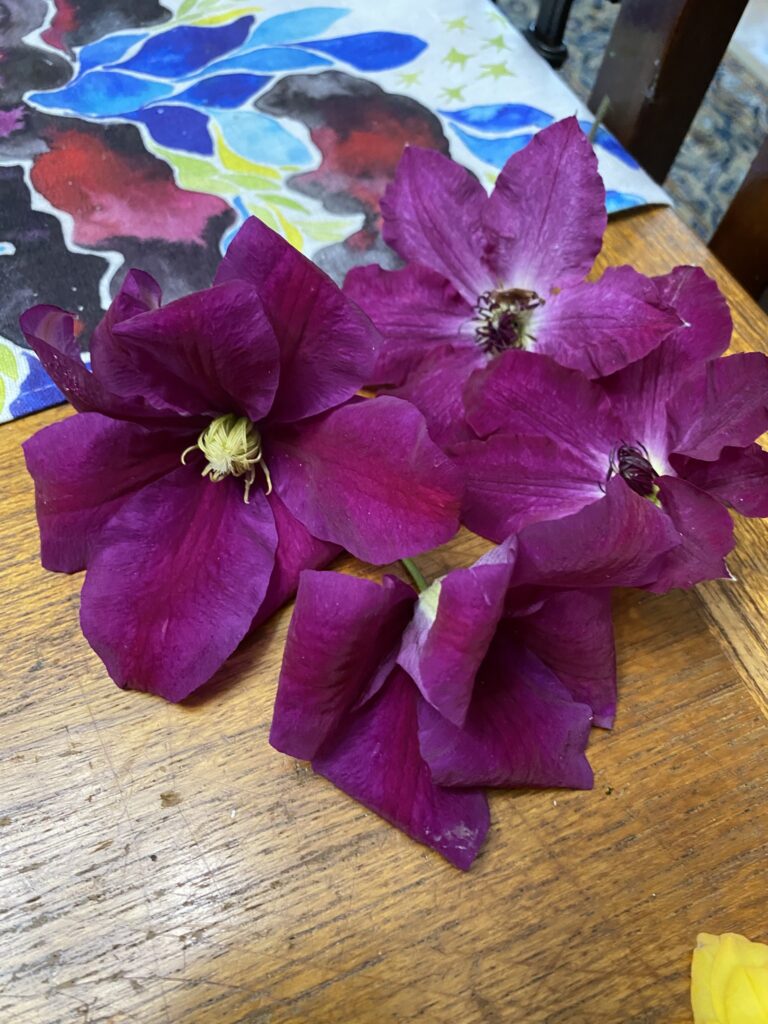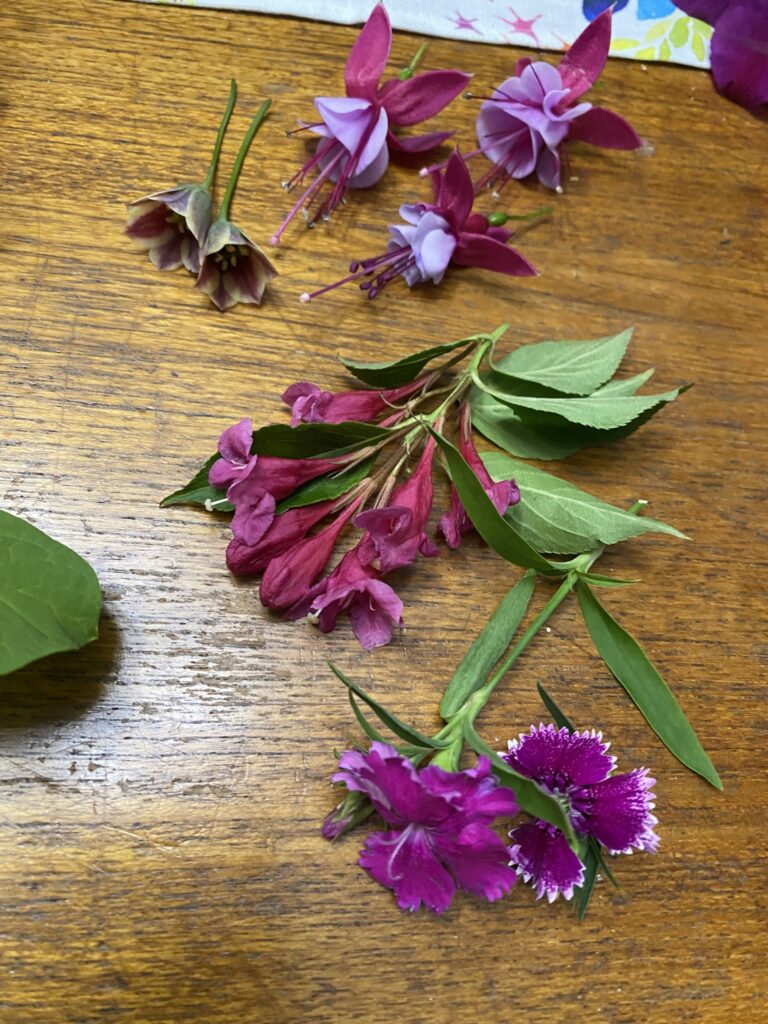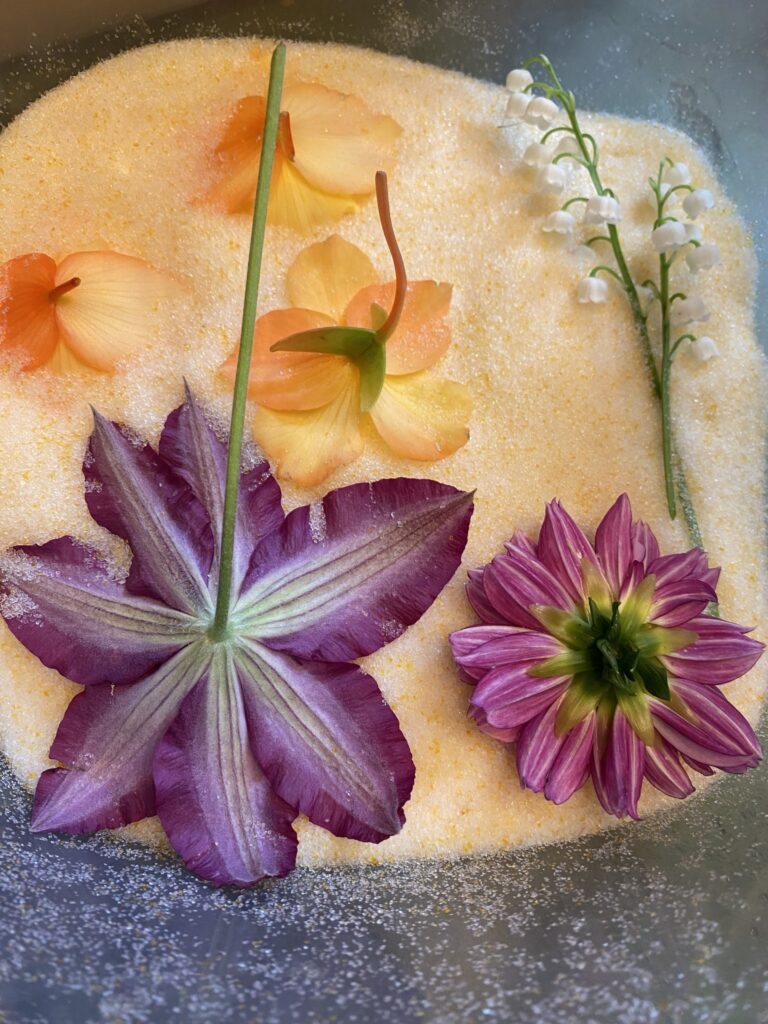We’re moving into the time of the garden when there are a lot of different flowers blooming at once. I decided to try being mildly scientific about figuring out which ones dry well, so I went around and collected two of each (or just one, if it didn’t have two to spare), with the plan of trying them both in dessicant and pressed, and checking back in a week to see how they did.
Some flowers have too much moisture in them to press well, some fall apart in the dessicant because they’re too delicate. I have some predictions — we’ll see! The ones that do well, I’ll incorporate into flower art in various forms — pressed flowers glued on cards and between panes of glass, painted with resin for jewelry, embedded in resin for jewelry, bookmarks, paperweights, trays, tables, bookends, etc. (Catch me at What’s Blooming on Harrison on May 18th! I’ll have a booth! Or stop by Sprout in Berwyn anytime…)
People have been asking if I’d teach a class on using resin, and I’m still thinking about how that would be feasible — there are some safety and logistical challenges. Will let you know if I figure something out. It’d likely be more a demo than a workshop, if I do it. (Locals, if you’re interested in a resin flower class, comment below, and I’ll try to make sure you’re tagged in if it happens.)
*****
Here, I’ll label these, in case people are interested:
1) mostly natives: baptisia, wild geranium (plus Bevan’s geranium), phlox, tiarella, shooting stars, wild iris, Virginia waterleaf.
2) alliums and mini petunia / calibrachoa (not sure which those are)
3) Star-of-Bethlehem (a volunteer I usually pull because even though it’s pretty, it’s very aggressive), Spanish bluebell / wood hyacinth, a few last white hellebore blooms, lily-of-the-valley (which I’m also slowly removing, invasive in woodlands and birds carry the seeds there from our gardens)
4) Jack Frost brunnera (almost done), Spanish bluebells / wood hyacinth, centaurea montana, delphinium (adore that shade of blue)
5) nepeta / catmint (this is either Walker’s Low or Cat’s Pyjamas), verbena (from a hanging basket), veronica
6) anemone in white and dark pink, dahlia, old-fashioned bleeding heart, lilac (this is a pink one, and I think there’s also a white variety, but most are purple)
7) Sicilian honey garlic, fuschia (from a hanging basket), weigela, two varieties of dianthus (there are lots)
8.) two (similar) varieties of clematis — I think the dark purple with red streaks is Etoille Violette, not sure of the other.
9) begonia, kale flower, geum
The vast majority of these are perennials that come back year after year. Most perennials usually only bloom for a few weeks, so they’ll be gone by June.
The last pic is flowers placed in dessicant to dry. The kind I use now changes color when it’s absorbed too much moisture — you can then heat it in a low oven to dry it out again, and re-use indefinitely.
We’re moving into the time of the garden when there are a lot of different flowers blooming at once. I decided to try being mildly scientific about figuring out which ones dry well, so I went around and collected two of each (or just one, if it didn’t have two to spare), with the plan of trying them both in dessicant and pressed, and checking back in a week to see how they did.
Some flowers have too much moisture in them to press well, some fall apart in the dessicant because they’re too delicate. I have some predictions — we’ll see! The ones that do well, I’ll incorporate into flower art in various forms — pressed flowers glued on cards and between panes of glass, painted with resin for jewelry, embedded in resin for jewelry, bookmarks, paperweights, trays, tables, bookends, etc. (Catch me at What’s Blooming on Harrison on May 18th! I’ll have a booth! Or stop by Sprout in Berwyn anytime…)
People have been asking if I’d teach a class on using resin, and I’m still thinking about how that would be feasible — there are some safety and logistical challenges. Will let you know if I figure something out. It’d likely be more a demo than a workshop, if I do it. (Locals, if you’re interested in a resin flower class, comment below, and I’ll try to make sure you’re tagged in if it happens.)
Here, I’ll label these, in case people are interested:
1) mostly natives: baptisia, wild geranium (plus Bevan’s geranium), phlox, tiarella, shooting stars, wild iris, Virginia waterleaf.
2) alliums and mini petunia / calibrachoa (not sure which those are)
3) Star-of-Bethlehem (a volunteer I usually pull because even though it’s pretty, it’s very aggressive), Spanish bluebell / wood hyacinth, a few last white hellebore blooms, lily-of-the-valley (which I’m also slowly removing, invasive in woodlands and birds carry the seeds there from our gardens)
4) Jack Frost brunnera (almost done), Spanish bluebells / wood hyacinth, centaurea montana, delphinium (adore that shade of blue)
5) nepeta / catmint (this is either Walker’s Low or Cat’s Pyjamas), verbena (from a hanging basket), veronica
6) anemone in white and dark pink, dahlia, old-fashioned bleeding heart, lilac (this is a pink one, and I think there’s also a white variety, but most are purple)
7) Sicilian honey garlic, fuschia (from a hanging basket), weigela, two varieties of dianthus (there are lots)
8.) two (similar) varieties of clematis — I think the dark purple with red streaks is Etoille Violette, not sure of the other.
9) begonia, kale flower, geum
The vast majority of these are perennials that come back year after year. Most perennials usually only bloom for a few weeks, so they’ll be gone by June.
The last pic is flowers placed in dessicant to dry. The kind I use now changes color when it’s absorbed too much moisture — you can then heat it in a low oven to dry it out again, and re-use indefinitely.


